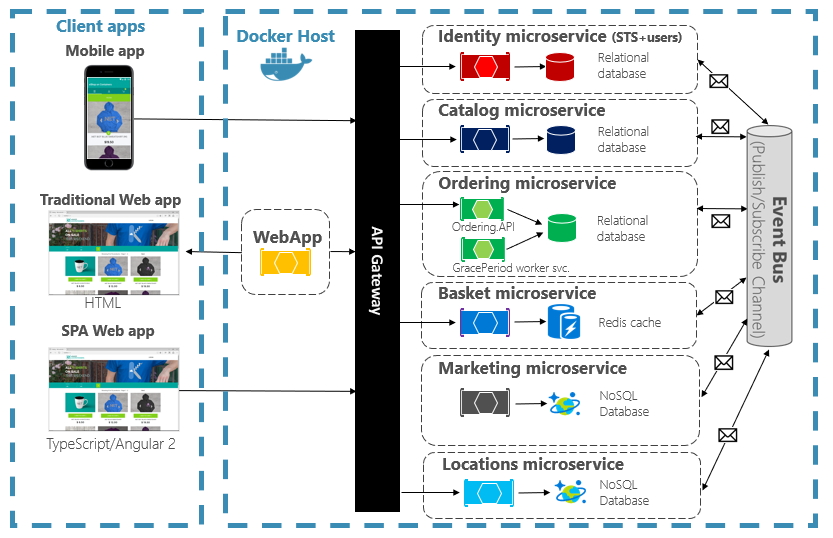For decades, Java has been the backbone of enterprise software development, powering everything from complex financial systems to large-scale e-commerce platforms. The evolution from Java EE (Java Platform, Enterprise Edition) to Jakarta EE marks a significant milestone in this journey. Now managed by the Eclipse Foundation, Jakarta EE is a community-driven open-source platform that has been re-energized to meet the demands of modern application architectures, including microservices, cloud-native deployments, and containerization. It provides a robust set of specifications that standardize enterprise Java development, ensuring portability across various application servers while fostering innovation.
This article provides a comprehensive technical guide to Jakarta EE, exploring its core concepts, practical implementation details, and advanced techniques. We will delve into how its annotation-driven, component-based model simplifies the development of scalable, secure, and maintainable Java backend systems. Whether you are a seasoned Java EE developer or a newcomer exploring Java frameworks, this guide will equip you with the knowledge to leverage Jakarta EE for your next Java enterprise project, demonstrating why it remains a powerful and relevant choice in today’s fast-paced technology landscape.
Understanding the Core Pillars of Jakarta EE
Jakarta EE is not a single framework but a collection of specifications, each defining an API for a specific enterprise concern. This modular approach allows developers to use only what they need. Modern Jakarta EE development is heavily reliant on annotations, which significantly reduces boilerplate code and XML configuration, promoting a “convention over configuration” philosophy. Let’s explore three fundamental specifications.
1. Jakarta Contexts and Dependency Injection (CDI)
CDI is the standard dependency injection framework for Jakarta EE. It provides a powerful mechanism for managing the lifecycle of components (called beans) and injecting them where needed. This promotes loose coupling and enhances testability, which are key principles of Clean Code Java. Key annotations include @Inject for requesting a dependency, and scope annotations like @ApplicationScoped (singleton for the application) and @RequestScoped (one instance per HTTP request).
2. Jakarta RESTful Web Services (JAX-RS)
JAX-RS provides a standard, annotation-based API for creating RESTful web services. It simplifies the development of a Java REST API by abstracting away the complexities of the HTTP protocol. Developers can define resource classes and methods that map directly to URL paths and HTTP verbs (GET, POST, PUT, DELETE). Common annotations include @Path, @GET, @POST, @Produces (to specify the response media type, like JSON), and @Consumes.
3. Jakarta Persistence (JPA)
JPA is the standard specification for Object-Relational Mapping (ORM) in Java, defining how to map Java objects to relational database tables. It allows developers to interact with a Java Database using high-level Java objects instead of writing raw JDBC and SQL. Implementations like Hibernate are widely used. Key annotations include @Entity to mark a class as a database entity, @Id for the primary key, and @Column for mapping fields to table columns.





























// A simple JPA Entity representing a User
import jakarta.persistence.Entity;
import jakarta.persistence.GeneratedValue;
import jakarta.persistence.GenerationType;
import jakarta.persistence.Id;
import jakarta.persistence.Table;
@Entity
@Table(name = "app_users")
public class User {
@Id
@GeneratedValue(strategy = GenerationType.IDENTITY)
private Long id;
private String username;
private String email;
// Getters and Setters
public Long getId() {
return id;
}
public void setId(Long id) {
this.id = id;
}
public String getUsername() {
return username;
}
public void setUsername(String username) {
this.username = username;
}
public String getEmail() {
return email;
}
public void setEmail(String email) {
this.email = email;
}
}Building a Practical Jakarta EE Application
Let’s combine these core concepts to build a simple REST API for managing tasks. This example demonstrates how seamlessly CDI, JAX-RS, and JPA work together. We will create a service layer to handle business logic and a REST endpoint to expose it. This layered Java Architecture is a common design pattern in enterprise applications.
Step 1: The Service Layer (CDI Bean)
The TaskService will manage our Task entities. We use CDI’s @ApplicationScoped to make it a singleton and inject JPA’s EntityManager to interact with the database. The @Transactional annotation ensures that each method runs within a database transaction.
import jakarta.enterprise.context.ApplicationScoped;
import jakarta.inject.Inject;
import jakarta.persistence.EntityManager;
import jakarta.transaction.Transactional;
import java.util.List;
// Assume a Task @Entity class exists similar to the User entity above
@ApplicationScoped
public class TaskService {
@Inject
private EntityManager entityManager;
@Transactional
public Task createTask(Task task) {
entityManager.persist(task);
return task;
}
public Task findTaskById(Long id) {
return entityManager.find(Task.class, id);
}
public List<Task> getAllTasks() {
return entityManager.createQuery("SELECT t FROM Task t", Task.class).getResultList();
}
}Step 2: The REST Endpoint (JAX-RS Resource)
The TaskResource exposes our business logic via a RESTful API. We use @Path to define the base URL for this resource. CDI’s @Inject annotation is used to inject an instance of our TaskService. JAX-RS annotations like @GET, @POST, @Produces, and @Consumes map HTTP requests to our Java methods.
import jakarta.inject.Inject;
import jakarta.ws.rs.*;
import jakarta.ws.rs.core.MediaType;
import jakarta.ws.rs.core.Response;
import java.util.List;
@Path("/tasks")
@Produces(MediaType.APPLICATION_JSON)
@Consumes(MediaType.APPLICATION_JSON)
public class TaskResource {
@Inject
private TaskService taskService;
@GET
public List<Task> listAllTasks() {
return taskService.getAllTasks();
}
@GET
@Path("/{id}")
public Response getTaskById(@PathParam("id") Long id) {
Task task = taskService.findTaskById(id);
if (task != null) {
return Response.ok(task).build();
}
return Response.status(Response.Status.NOT_FOUND).build();
}
@POST
public Response createTask(Task task) {
Task createdTask = taskService.createTask(task);
return Response.status(Response.Status.CREATED).entity(createdTask).build();
}
}To run this application, you would package it as a WAR (Web Application Archive) file using Java Build Tools like Java Maven or Java Gradle and deploy it to a Jakarta EE-compatible application server such as WildFly, Open Liberty, or Payara. The server provides the runtime implementations for all the specifications we’ve used.
Advanced Techniques for Cloud-Native Microservices
While Jakarta EE provides a solid foundation, the Eclipse MicroProfile project complements it with specifications tailored for building resilient and observable Java Microservices. Most Jakarta EE runtimes also support MicroProfile, offering a powerful combined platform for Java Cloud development.
1. Asynchronous Operations with Jakarta Concurrency
For long-running tasks, blocking the request thread is inefficient and hurts scalability. Jakarta Concurrency provides the @Asynchronous annotation, allowing a method to be executed on a separate thread from a managed thread pool. This immediately frees up the request thread to handle other requests, improving overall application throughput. This is a key tool for Java Async programming.
































import jakarta.ejb.Asynchronous;
import jakarta.ejb.Stateless;
import java.util.concurrent.Future;
import java.util.concurrent.CompletableFuture;
@Stateless
public class ReportGeneratorService {
@Asynchronous
public Future<String> generateComplexReport(String reportId) {
try {
// Simulate a long-running process
Thread.sleep(10000);
} catch (InterruptedException e) {
Thread.currentThread().interrupt();
}
String reportUrl = "/reports/" + reportId + ".pdf";
return CompletableFuture.completedFuture(reportUrl);
}
}2. Externalized Configuration with MicroProfile Config
Hardcoding configuration values is a major anti-pattern. MicroProfile Config provides a standardized way to externalize configuration from various sources (system properties, environment variables, property files). You can inject configuration values directly into your beans using @Inject and @ConfigProperty.
import jakarta.enterprise.context.ApplicationScoped;
import jakarta.inject.Inject;
import org.eclipse.microprofile.config.inject.ConfigProperty;
import java.util.Optional;
@ApplicationScoped
public class DatabaseConnector {
@Inject
@ConfigProperty(name = "database.connection.url")
private String dbUrl;
@Inject
@ConfigProperty(name = "database.connection.poolsize", defaultValue = "10")
private int poolSize;
@Inject
@ConfigProperty(name = "database.feature.flag")
private Optional<Boolean> featureFlag;
public void connect() {
System.out.println("Connecting to " + dbUrl + " with pool size " + poolSize);
if (featureFlag.orElse(false)) {
System.out.println("New experimental feature is enabled!");
}
}
}3. Securing Endpoints with Jakarta Security and JWT
Jakarta Security modernizes the security model with a focus on ease of use and integration with modern authentication mechanisms like OpenID Connect and JWT (JSON Web Tokens). Using annotations like @RolesAllowed, you can declaratively secure your JAX-RS endpoints. MicroProfile JWT provides further standardization for propagating and validating JWTs, making it a perfect fit for securing microservices.
Best Practices and Performance Optimization
Building a robust application goes beyond writing functional code. Following best practices ensures your application is maintainable, scalable, and performant.
































Java Best Practices for Jakarta EE
- Favor the Web Profile: For most microservices and web applications, the Jakarta EE Web Profile provides all the necessary APIs (JAX-RS, CDI, JPA, etc.) without the overhead of the Full Platform.
- Use Dependency Injection: Always use CDI (
@Inject) to manage dependencies instead of manual instantiation. This improves modularity and makes testing with tools like JUnit and Mockito much easier. - Effective Testing: Leverage Arquillian for in-container integration tests that validate your components in a real runtime environment. For unit tests, Mockito can be used to mock dependencies.
Java Performance and Optimization
- JPA Performance: Be mindful of lazy vs. eager fetching strategies to avoid the N+1 select problem. Use native queries or JPQL for complex database operations where appropriate. Monitor your SQL with a tool like Hibernate Statistics.
- Connection Pooling: Ensure your application server’s JDBC connection pool is properly configured for your expected load. This is a critical aspect of Java Performance tuning.
- JVM Tuning: For high-throughput applications, basic JVM Tuning can yield significant benefits. Monitor Garbage Collection logs and adjust heap size (
-Xmx,-Xms) and choose a suitable garbage collector (e.g., G1GC or ZGC for modern Java versions like Java 17 and Java 21).
DevOps and Deployment
- Containerization: Package your Jakarta EE application as a thin WAR and deploy it inside a Docker container running a lean application server like Open Liberty or WildFly. This aligns with modern Java DevOps practices for CI/CD Java pipelines and deployment on platforms like Kubernetes.
- Immutable Infrastructure: Treat your containers as immutable artifacts. Any configuration changes should be managed externally (e.g., via MicroProfile Config) and result in a new deployment, not a change to a running container.
Conclusion
Jakarta EE has successfully evolved from its monolithic roots into a modern, flexible, and powerful platform for building enterprise-grade Java applications. Its foundation on open standards guarantees vendor neutrality and long-term stability, while its integration with MicroProfile provides the necessary tools for crafting cloud-native, resilient Java microservices. By leveraging its rich, annotation-driven component model, developers can build sophisticated, scalable, and maintainable systems with remarkable productivity.
The combination of a mature ecosystem, a vibrant community, and a clear focus on modern architectural patterns ensures that Jakarta EE will remain a cornerstone of Java Enterprise development for years to come. As you embark on your next project, consider exploring the specifications that align with your needs. Dive into the documentation, experiment with different runtimes, and engage with the community to unlock the full potential of this exceptional platform.
